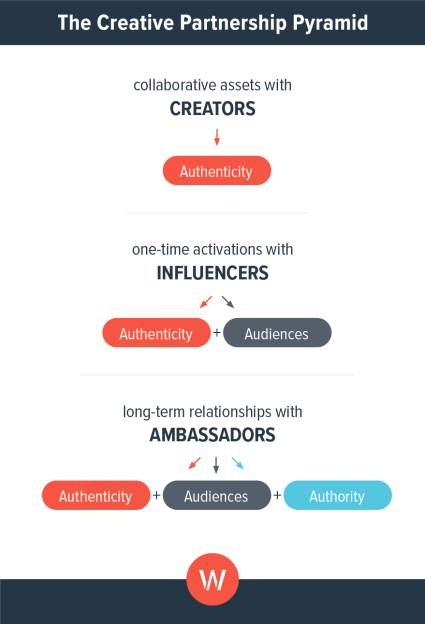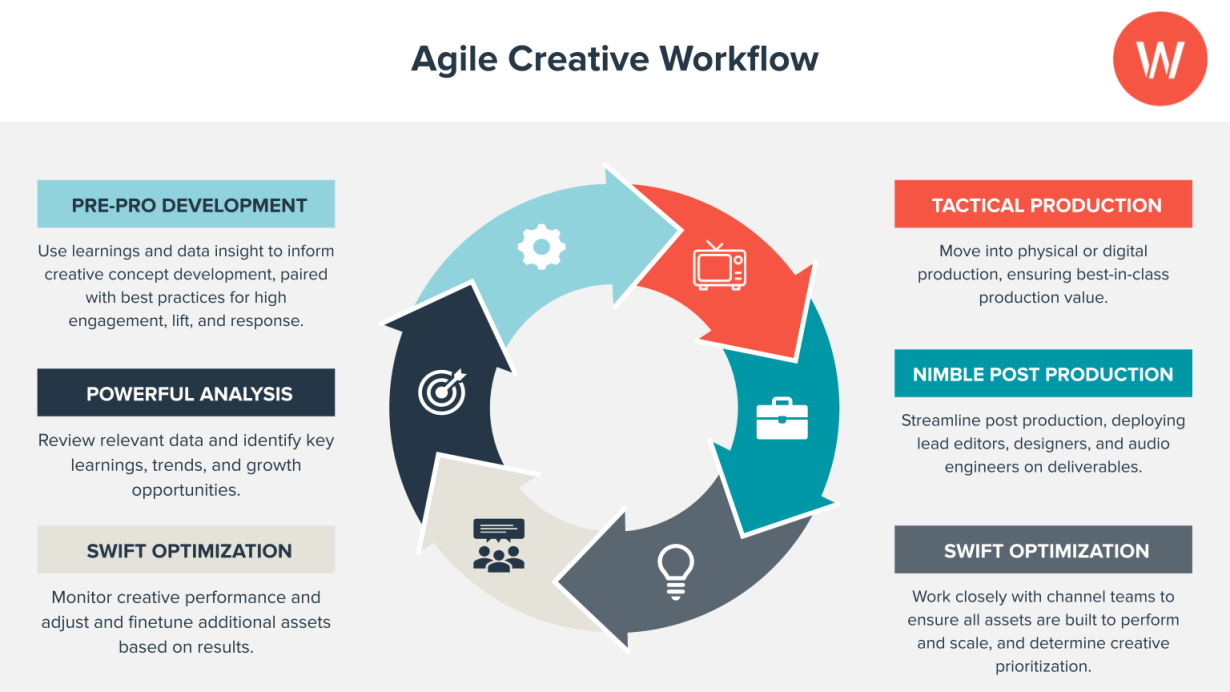It’s not news that ad creative is going through a major evolution, getting more collaborative, interactive, and experiential. So marketers trying to figure out how to get the most out of their dollars need to be asking a critical question: should you throw out your entire creative budgeting playbook in 2023 and start from scratch?
Some brands have a tendency to treat their creative budgeting process as a copy-and-paste exercise, relying mostly on prior year inputs with a couple of additions and subtractions thrown in for the new year. But consumer behavior changes, the media landscape evolves, and, if you want to stay ahead of the competition, your brand needs to be able to adapt.
Marketers need to reconsider how they’re investing in the strategy behind and development of creative assets supporting their marketing campaigns. Your creative budget needs to reflect the priorities, objectives, and business outcomes that define your creative strategy.
Why your creative budgeting strategy may need a fresh start
Starting from scratch and building for this year’s needs with a full creative budget reset isn’t as easy as rolling over last year’s numbers, but it gives you a number of direct, immediate advantages by tackling some very real challenges:
- Creative fatigue is real for consumers; to make it into a consumer’s consideration set and/or stay top of mind, fresh brand assets that clearly communicate current value props are critical.
- New year, more noise: the ongoing evolution of marketing technology and the rise of new media environments mean consumers are exposed to ever more ads across a fragmented media planning environment. To get noticed, brands need to clearly educate, entertain, or inspire with fresh creative while taking the full media mix into consideration to gain consumer attention and stay in the conversation.
- Culture is always changing; if your 2022 strategy leaned heavily into the current cultural zeitgeist, it may be time for a bigger change to stay relevant and up to the moment.
- Creative has gotten increasingly collaborative: commerce driven by influencers and creator content is no longer a nice-to-have, it’s a necessary part of creative strategy. Brands need to think about not just what to say, but who is the right voice to communicate different messages.
How to build a marketing budget that reflects your creative strategy
To get the most out of your marketing, creative strategy and creative budget can’t be decoupled. Your budget should look like a skeleton of your strategy, providing the basic structure for your media activations and taking the realities of today’s world into account.
Generally, your creative team is tasked with developing concepts and producing assets for campaigns across the full funnel, so it’s critical to delineate resources in your budget to support the distinct roles marketing plays along the consumer decision journey.
Creative teams facilitate this synergy by making sure the brand voice is consistent across all touchpoints; that’s one way to start the necessary process of breaking down the silos between brand and performance marketing.
While campaigns that build the brand and campaigns that are built for direct response play distinct roles and are often supported through differentiated media mixes, all creative assets need to share the common thread of the brand itself.
From a brand media perspective, the creative budget should include resources supporting new evergreen brand creative, including:
- Assets required for key brand campaign beats across all media touch points
- Creative that will amplify key partnerships
- Organic social post content to support the content calendar
You should also reserve a part of your budget to lean into real-time cultural moments you may not yet have on the radar that align with the brand ethos and values so the brand can take part in larger conversations or trends if and when those are relevant to your business.
On the performance side, your budget needs to include any and all assets required to nurture and convert audiences across the touchpoints reflected in your media mix. You should make sure all the creative you’ll need to achieve your business targets and investment levels are present and accounted for because underestimating now could mean you don’t have enough assets to support your strategy. That will lead to creative fatigue for your audience and negative performance impacts down the line for your brand.
Another way to get in front of volume challenges when it comes to creative production is creator and influencer collaborations and scaled brand ambassador activations. A mix of voices aligned with your business objectives beyond just the brand itself should be built into both your strategy and budget. Brand creative obviously plays a key role in your marketing, but collaborators can help brands access new audiences, grow community trust and gather social proof, stay culturally relevant, and get in front of prospective customers in a more natural, authentic way.

That’s especially important right now; we know consumers are tightening their budgets on essentials and taking more time to research discretionary purchases because of the uncertain state of the economy. The endorsement of an influencer or the opportunity to see a more personal side of a brand can be a deciding factor in the purchase decision for new and existing customers.
Influencers and content creators are not always funded through creative budgets. But if you want to make a meaningful commitment to these collaborative partnerships, they need to have a dedicated place in the budget framework. Whether you allocate funding through media or creative is entirely up to you, but a ‘creative’ investment needs to be accounted for if it’s part of your strategy.
What to take into account when planning your creative marketing budget
You need to root your creative budget in specific marketing and business outcomes to prioritize the right actions. Your goals and KPIs, like your strategy, need to be built to reflect why you are doing all of this work in the first place.
Whether you are working on a big brand with a massive budget or a smaller business looking to get the most out of modest marketing spend, there are some best practices for successful creative investment that won’t break the bank you need to keep in mind:
- If your goal is a seamless creative experience across the user journey, you need to make sure to account for iteration in your creative budget: consistent messaging that maps to the consumer’s relationship with the brand across different channels, formats, and CTAs by funnel stage
- In the old days of TV, frequency is everything, but today’s consumers want variety, so your budget needs to reflect the right number of assets, the right mix, and the right variations based on your investment level and objectives
- You can use existing creative in new ways, but that also takes some resources; build in opportunities to generate new evergreen assets and apply seasonal refreshes to keep things new.
- You need media platform-optimized assets to lean into algorithmic best practices, so identify what drives consumer engagement across different environments and make sure any creative action based on those learnings is accounted for in your budget.
Getting your creative budget right takes a lot of cross-functional input and coordination across marketing teams, art directors, animators, producers, project managers, etc. You should include the necessary stakeholders that will bring the whole thing to life in budget conversations.

What’s effective today may not engage audiences in six months or by next year, making the planning process more complex. Set aside budget for continuous testing into new trends that coincide with your marketing objectives.
How to make sure your 2023 marketing budget is accountable
Accountability and efficiency should be at the heart of any 2023 budget, creative or otherwise. There are several ways to build measurability into your creative budget. We recommend taking a couple of actions as part of the process:
- Map the role of creative to key marketing objectives and set KPIs for creative to use as guiding targets when evaluating creative performance
- Create an agile feedback loop between media and creative to share key performance insights tied to creative, which can inform strategic direction for new creative sprint cycles and post-production work, as well as optimization of creator/influencer partners based on what’s working.
- Invest in new opportunities as consumer behavior and media opportunities change and expand so key audiences see your brand as culturally relevant (if that is a priority).
You likely already know that your marketing strategy needs to change on (at least) a yearly basis to reflect new marketing and business priorities and changes in consumer behavior. The same is true about your creative budget.
If you’re relying on last year’s budget, you’re going to miss out on opportunities to reach your consumers now and in the future. Taking an agile, interconnected approach to creative budgeting and strategy will open up significant advantages for your business.







Responses